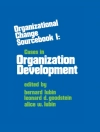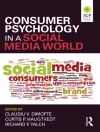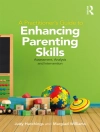Provides a unique interdisciplinary approach to the science of intimate human relationships
This newly updated edition of a popular text is the first to present a full-blooded interdisciplinary and theoretically coherent approach to the latest scientific findings relating to human sexual relationships. Written by recognized leaders in the field in a style that is rigorous yet accessible, it looks beyond the core knowledge in social and evolutionary psychology to incorporate material and perspectives from cognitive science (including brain-imaging studies), developmental psychology, anthropology, comparative psychology, clinical psychology, genetic research, sociology, and biology.
Written by an international team of acclaimed experts in the field, The Science of Intimate Relationships offers a wealth of thought-provoking ideas and insights into the science behind the initiation, maintenance, and termination of romantic relationships. The 2nd Edition features two new chapters on health and relationships, and friends and family, both of which shed new light on the complex links among human nature, culture, and romantic love. It covers key topics such as mate selection, attachment theory, love, communication, sex, relationship dissolution, violence, mind-reading, and the relationship brain.
- Provides a coherent and theoretically integrative approach to the subject of intimate relationships
- Offers an interdisciplinary perspective that looks beyond social and evolutionary psychology to many other scientific fields of study
- Includes two new chapters on ‘Relationships and Health’ and ‘Friends and Family’, added in response to feedback from professors who have used the textbook with their classes
- Presented by recognized leaders in the field of relationships
- Features Power Point slides and an online Teaching Handbook
The Science of Intimate Relationships, 2nd Edition is designed for upper-level undergraduate students of human sexuality, psychology, anthropology, and other related fields.
İçerik tablosu
About the Authors xi
Preface xiii
1 Introduction: The Science of Intimate Relationships 1
The Science of Intimate Relationships: A Brief History and Analysis 2
Domains of Study 2
An Example 4
Interdisciplinary Links 4
The Relation Between Mind and Body 5
Common Sense and Pop Psychology 5
Research Methods 7
Contents of the Book 8
Summary and Conclusions 9
2 Intimate Relationships in Context: Key Theories, Concepts, and Human Nature 11
Social Psychology 12
A Brief History 12
Interdependence Theory 13
Evolutionary
Psychology 15
Darwin 15
Darwinian Evolutionary Theory 16
Selection for Survival 16
Sexual Selection 17
Parental Investment Theory 18
Key Features of Evolutionary Psychology 19
Human Nature and Genes 20
What is Human Nature? 21
Life History Theory 22
Goals of Life History Theory 22
Life History Mysteries and the Critical Role of Tradeoffs 22
The Strange Nature of Human Development 24
Of Human Bondage 24
Humans are Cultural Animals 26
Summary and Conclusions 28
3 The Intimate Relationship Mind 31
Relationship Goals 32
Lay Relationship Theories 33
General Lay Theories 34
A Case Study: Attribution Theory 34
Self‐Esteem 36
General Relationship Lay Theories 37
Local Relationship Theories 38
Self Theories 39
Relationship Evaluations 39
The Functions of Lay Relationship Theories: Back to the Goals 40
On‐Line Cognitive Processing: Unconscious and Automatic Versus Conscious and Controlled 42
When Do People Think Consciously About Relationships? 43
Evidence for This Distinction 44
Role of Stored Relationship Theories 44
Self‐Regulation 45
Interlude and a Caveat 46
Emotions in Relationships 47
Functions of Emotions 47
Lay Emotion Theories and Scripts 47
Basic Emotions 48
Do Emotions Get in the Way of Rational Thought? 50
The Distal Origins of the Intimate Relationship Mind: Evolution and Culture 51
Summary and Conclusions 53
4 The Intimate Relationship Body 55
Why Sexual Reproduction? 56
Human Genitalia and Their Origins 57
The Human Body and Behavior are Windows into Our Mating Past 59
Orgasms, Nipples, Adaptations, and By‐Products 61
Hormones, Sex, and Relationships 62
Sex Hormones 63
Cuddle Hormones 66
Fight or Flight Hormones 67
The Relationship Brain 67
Social Cognition and the Brain 69
The Prefrontal Cortex 69
Emotions and Cognitions Work Together 69
Controlled Versus Automatic Processing 71
Bonding and Love 71
The Cuddle Hormones as Neurotransmitters 71
The Dopamine System 73
Summary 73
Summary and Conclusions 74
5 Intimate Relationships and Health 77
The Impact of Divorce on Children 78
The Path from an Unstable Family Life in Childhood to Health Problems in Adulthood 78
Are Long‐Term Relationships Good for You? 80
A Crucial Caveat: It Depends on Relationship Quality 81
Protective Relationship Factors and Health Outcomes 85
Divorce, Partner Loss, and Health Outcomes 86
Summary and Conclusions 89
6 Born to Bond: From Infancy to Adulthood 91
Attachment Theory 92
Brief Historical Overview 92
Normative Features of Attachment 94
Mother–Infant Synchrony 94
Keeping Close 95
Four Phases of Development 95
Individual Differences in Attachment 96
Attachment in Adolescence and Adulthood 98
Normative Processes and Outcomes in Adulthood 102
Individual Differences and Outcomes in Adulthood 103
Life History Models of Social Development 105
The Development of Individual Differences in Attachment and Mating Strategies 106
Variations on a Theme 108
Controversies 110
Summary and Conclusions 111
7 Selecting Mates 113
Searching for a Mate: What Do People Want? 114
The Nature of Mating Standards 116
Personality Traits, Status, and Resources 116
Physical Attractiveness 117
Summary 119
The Origins of Mate Standards 119
Good Investment 119
Good Genes 120
Within‐Gender Differences in Mating Strategies 121
Sociosexuality and Mating Strategies 121
The Menstrual Cycle and Mate Preferences 122
Gender Differences, Mating Strategies, and Short‐Term Versus Long‐Term Liaisons 124
Physical Attractiveness, Age, Status, Resources, and Personality Traits 124
Sexual Variety 126
Explaining Gender Differences in Mate Selection Strategies 128
Parental Investment Theory 128
Sexual Strategies Theory 129
Social Structural Model 129
Resolution 129
Mate Preferences, Self‐Presentation, and the Self‐Concept 130
How the Mating Game (and the Media) Shape the Self‐Concept 131
Explaining Within‐Gender Differences in Mating Strategies and Preferences 132
Do Mate Preferences Predict Actual Mate Choices? 134
The “New” Social Media World of Dating and Mate Selection 136
Summary and Conclusions 137
8 Family and Friends 139
Alloparenting: The Central Role of the Family 140
Grandparents 141
Mothers and Fathers 142
Romantic and Platonic Love 143
The Incest Taboo 144
Friends and Romance 147
Meet the Parents 149
Summary and Conclusions 152
9 Love, Sweet Love 155
Love as a Commitment Device: Pair Bonding in Humans 156
Romantic Love Is Universal 156
Romantic Love Has Distinctive Emotional and Biological Signatures 157
Romantic Love Suppresses the Search for Mates 158
Monogamy, Polygyny, Polyandry, and Polyamory 161
Infidelity and Divorce: Is Love Meant to Last? 163
Summary 164
The Nature of Love 164
Passionate Love 165
Self‐Expansion 165
Physical Arousal and Stress 166
The Slow Slide in Passion 166
Companionate Love 167
Links Between Passionate and Companionate Love 167
Sternberg’s Triangular Model of Love 169
Nonlove 169
Liking 169
Infatuation 170
Empty Love 170
Romantic Love 170
Companionate Love 170
Fatuous Love 170
Consummate Love 171
The Maintenance of Love and Intimacy 172
Summary and Conclusions 174
10 Reading Minds, Partners, and Relationships 177
Looking Through the Eyes of Love: Reality Versus Illusion in Intimate Relationships 178
Can Bias Be Rational? 179
Research Case Study 179
Projection 180
Can Judgments Be Biased and Accurate at the Same Time? 180
Two Kinds of Accuracy 180
Research Case Study 182
Are People Aware of Bias and Accuracy in Their Relationship Judgments? 182
A puzzle and an Explanation 182
Causes and Consequences of Accuracy and Bias in Partner and Relationship Judgments 184
Links Between Accuracy and Relationship Quality 184
Relationship Stage 185
First Meetings 185
Ongoing Relationships 188
Individual Differences and Context 189
Self‐esteem and Stress 189
Security and Stress 190
Summary 191
Back to Reading Minds 191
Methods 191
Research Findings 192
Individual Differences in Mind‐Reading 193
Summary and Conclusions 196
11 Communication and Interaction 197
Couple Communication During Conflict 199
What Do Communication Behaviors Predict? 199
Toxic Patterns: Negative Reciprocity and Demand‐Withdrawal 201
Moving beyond Conflict 202
Communication Behavior and Cognition 202
Responding to Relationship Threats: Accommodation and Risk Regulation 203
Regulating Risk 204
Regulating Partners 206
Summary 207
Good “Negative” Behaviors and Bad “Negative” Behaviors 207
When Honest Communication Is Healthy and Good Management Fails 208
Stress Is … Well, Stressful 208
Why Adopting One Default Strategy Is Not a Good Idea 209
Providing and Communicating Support 211
Relationship Satisfaction and Support 212
What Recipients of Support Do, Think, and Feel Counts 213
Can Partners Be Too Supportive? 214
Summary 216
Summary and Conclusions 216
12 Sex and Passion 219
The Biology of Sex 220
Sexual Orientation 221
The Origins of Sexual Orientation 221
Hormones, Brain Development, and Congenital Adrenal Hyperplasia 222
Genes and Homosexuality in Men 223
Sexual Plasticity in Women 224
Sexual Desire and Relationships 225
Gender Differences in Sex and Sexuality 227
Gender Differences in Sex Drive 227
Gender Differences in Desire for Multiple Sex Partners 229
Gender Differences in Negotiating Sex in Relationships 230
Sexual Jealousy 230
Sex and Relationship Satisfaction 232
Does Better Sex Lead to Better Relationships? 232
Do Better Relationships Lead to Better Sex? 233
Communication May Be Critical 233
Individual Differences in Sociosexuality 234
Summary and Conclusions 237
13 Relationship Violence 239
Gender Differences in Intimate Violence 240
Research Using the Conflict Tactics Scale 240
The Research Bombshell 241
Is the Conflict Tactics Scale Reliable and Valid? 242
What do the Results from the Conflict Tactics Scale Really Mean? 245
Resolving the Paradox 245
All Men are Not Created Equal 246
Severity and Consequences of Physical Violence 247
Summary 248
Till Death Us Do Part 248
Explaining Relationship Violence 249
An Evolutionary Approach 249
A Feminist Perspective 252
A Social Psychological Approach 253
Explaining Variability in Intimate Violence Within and Between Cultures 255
Can Relationship Violence be Prevented, and, if so, How? 257
Summary and Conclusions 258
14 Relationship Dissolution 261
Predicting Relationship Dissolution: What Drives Couples Apart? 263
Socio‐Demographic Variables, Relationship History, and Individual Differences 263
Are the Fates of Relationships Sealed Before they Begin? 265
Relationship‐Level Factors 266
Love and Investment 268
Satisfaction Level 269
Quality of Alternatives 269
Investment Size 269
The Power and Limitations of Relationship Maintenance Strategies 270
Consequences of Relationship Dissolution 273
Moving On and Letting Go 273
Relationship
Therapy 275
Traditional Behavioral Couples Therapy 276
Cognitive Behavioral Couples Therapy 276
Integrative Behavioral Couples Therapy 277
Emotion Focused Couple Therapy 277
Does Relationship Therapy Work? 278
Summary and Conclusions 279
15 Assembling the Relationship Elephant 281
The Power of Culture and Evolution 282
How Pair‐Bonding and Romantic Love Played Pivotal Roles in the Evolution of Modern Humans 283
Gender Differences 286
Within‐Gender Differences 288
Science and Intimate Relationships 290
Conclusion 290
Glossary 291
References 303
Index 353
Yazar hakkında
GARTH FLETCHER, PHD, is Professor of Psychology at Victoria University of Wellington, New Zealand.
JEFFRY A. SIMPSON, PHD, is Professor of Psychology and Director of the Doctoral Minor in Interpersonal Relationships at the University of Minnesota, USA.
LORNE CAMPBELL, PHD, is Professor of Psychology at the University of Western Ontario, Canada.
NICKOLA C. OVERALL, PHD, is Professor of Psychology at the University of Auckland, New Zealand.












